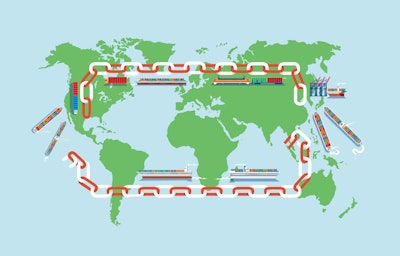
The United States’ dependency on Chinese technology supply chains could be reduced by up to 40% by 2030 in key segments, according to a new report from Bloomberg Intelligence (BI). If the United States were to move to lessen its supply chain from China, it could reduce its dependency by at least 20% in a moderate scenario. China’s dominance in chip manufacturing as well as the broader electronics manufacturing services sector (EMS) are marked obstacles for a more significant reduction in Chinese supply chain dominance.
“Decoupling supply chains can be difficult,” says Steven Tseng, senior technology analyst at Bloomberg Intelligence. “The dominance of Chinese companies on smartphone, chip, and the wider electronics manufacturing services sector poses a particular challenge should the U.S. take action to reduce its dependence on Chinese supply chains. Even our most aggressive scenario shows only a 40% reduction by the end of this decade. With U.S. market juggernauts like Apple relying almost exclusively on China for its manufacturing and assembly, the path to decoupling of the two countries’ supply chains would be long and arduous.”
- Growing geopolitical tensions between the U.S. and China, continuing pandemic-driven lockdowns in China and unexpected power curbs that cause significant delays in the production of Chinese-manufactured goods all contribute to more companies embracing the concept of “China Plus One.”
- China’s manufacturing stake in certain key sectors such as smartphone manufacturing has grown to encompass 70% of the global share and almost 50% of global smartphone shipments.




![Pros To Know 2026 [color]](https://img.sdcexec.com/mindful/acbm/workspaces/default/uploads/2025/08/prostoknow-2026-color.mduFvhpgMk.png?auto=format%2Ccompress&bg=fff&fill-color=fff&fit=fill&h=100&q=70&w=100)







![Pros To Know 2026 [color]](https://img.sdcexec.com/mindful/acbm/workspaces/default/uploads/2025/08/prostoknow-2026-color.mduFvhpgMk.png?ar=16%3A9&auto=format%2Ccompress&bg=fff&fill-color=fff&fit=fill&h=135&q=70&w=240)






